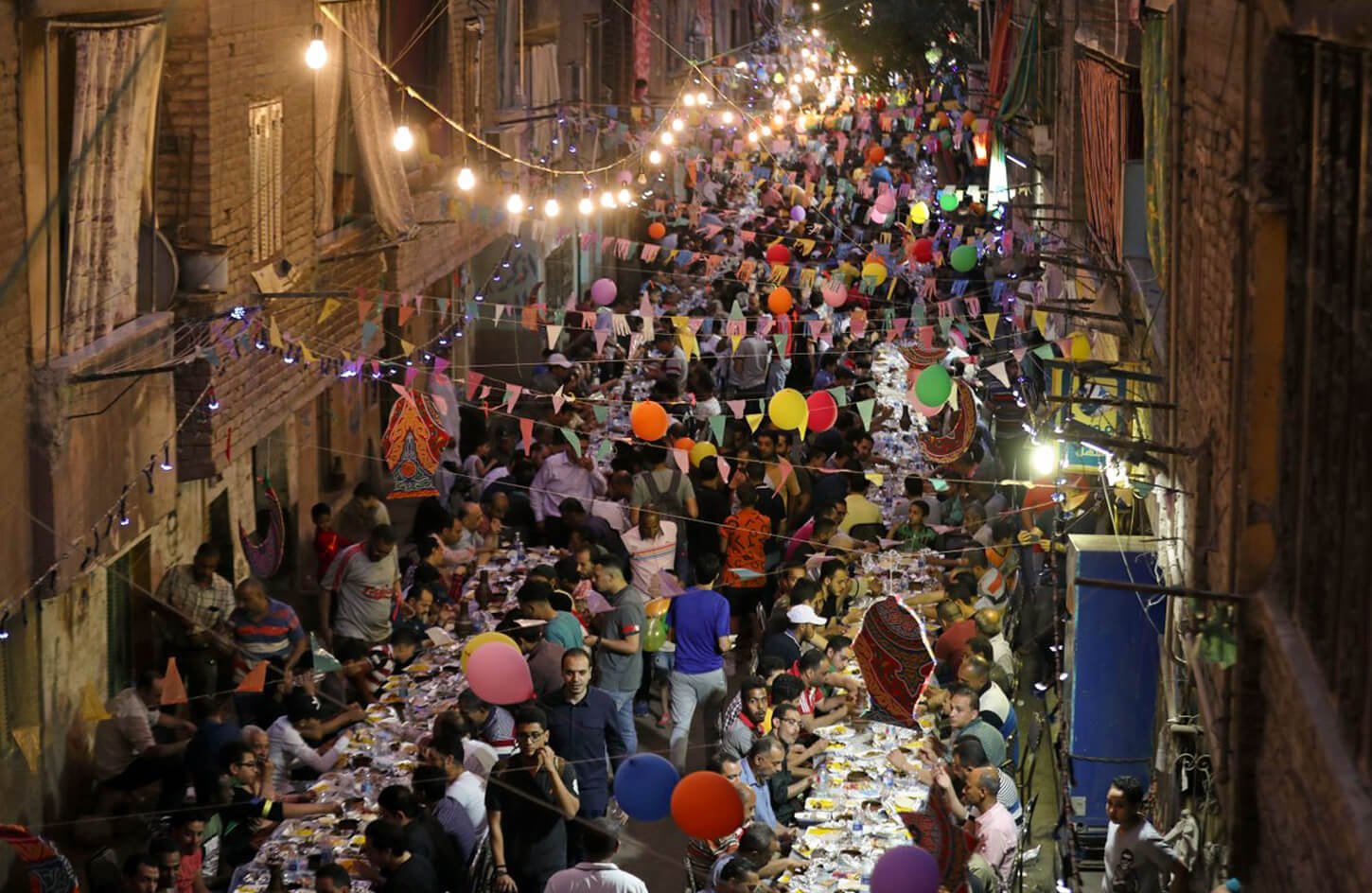
Imagine walking through Cairo’s markets at dusk. The call to prayer fills the air as golden lanterns light up the streets. This is what Ramadan brings to Egypt—a time of faith and festivity.
Traveling to Egypt during Ramadan is special. You’ll see how the country changes. It’s a mix of quiet days and lively nights.
When you visit Egypt in Ramadan, you’ll see 90% of the people gather for Iftar. Yet, the Great Pyramids are still open for you to explore. The days are calm, but the evenings come alive with markets and families sharing dates under the stars.
This guide will help you understand Ramadan’s rhythm. You’ll learn about hidden iftar dinners and when cafés reopen. It’s your chance to experience Egypt’s traditions.
Walking through Cairo’s markets at sunset, you’ll see streets lit up with glowing fanous lanterns. These lanterns are key symbols of Egypt’s Ramadan traditions. This month is a mix of spiritual devotion and lively community life, attracting both locals and visitors.
Over 90% of Egyptians fast from dawn till dusk. But the true essence of Ramadan is in the shared moments. Nights are filled with iftar gatherings and markets.
Evenings are alive with activity as families and tourists enjoy Iftar feasts. Restaurants and street stalls offer dishes like qatayef and karkadeh tea. The sound of the Ramadan cannon, echoing since the 1800s, signals the end of fasting.
Listen for the mesharati drummers, who wake neighborhoods for the predawn sohour meal. This tradition dates back to Ottoman times.
Exploring Khan El Khalili Bazaar after dark is a unique experience. Artisans sell handcrafted lanterns and spices until midnight. Hotels also host public iftar events, welcoming travelers to join in.
But remember, respect is key. Avoid eating in public during daylight to honor the fasting tradition.
Nightlife in Cairo is vibrant after sunset. Azhar Park hosts live folklore performances and food stalls. Even the Pyramids offer nighttime tours under the stars.
Whether enjoying erq sous at a café or shopping in Al-Muizz Street’s markets, every moment connects you to this timeless tradition.
Planning your trip around Ramadan? Let me break it down. Ramadan starts on the Islamic lunar calendar, which changes every 10–12 days. In 2024, it begins on March 10 and ends on April 9, with Eid from April 10–12. For 2025, mark your calendar for February 28 to March 29.
Since dates depend on moon sightings, check local updates close to your travel dates.
When’s the best time to visit Egypt during Ramadan? Mid-month offers a rhythm of fasting and lively Iftar gatherings. Seek spiritual moments during the first weeks or join the festive rush before Eid. Cities like Cairo and Luxor host nightly events—perfect for travelers craving cultural immersion.
Timing your day matters. Sehri (pre-dawn meal) in Cairo starts at 2:15 AM, with Iftar at 5:33 PM. Alexandria’s Sehri is 2:22 AM, while Luxor’s Iftar ends at 5:34 PM. Check local schedules to sync with community routines and enjoy bustling markets after sunset.
My top Egypt travel tips during Ramadan? Book accommodations early—hotels fill fast. Pack warm layers for early mornings and light fabrics for evenings. Explore markets at night when they’re alive with lanterns and vendors. Respect local customs by dining indoors or in designated areas during daylight.
Remember, Eid al-Fitr’s three-day holiday (April 10–12, 2024) brings family celebrations and crowded transport. Time your visit to match your interests: spiritual seekers might prefer mid-Ramadan, while festival lovers should plan near Eid. Let’s make your journey unforgettable while honoring Egypt’s sacred traditions.
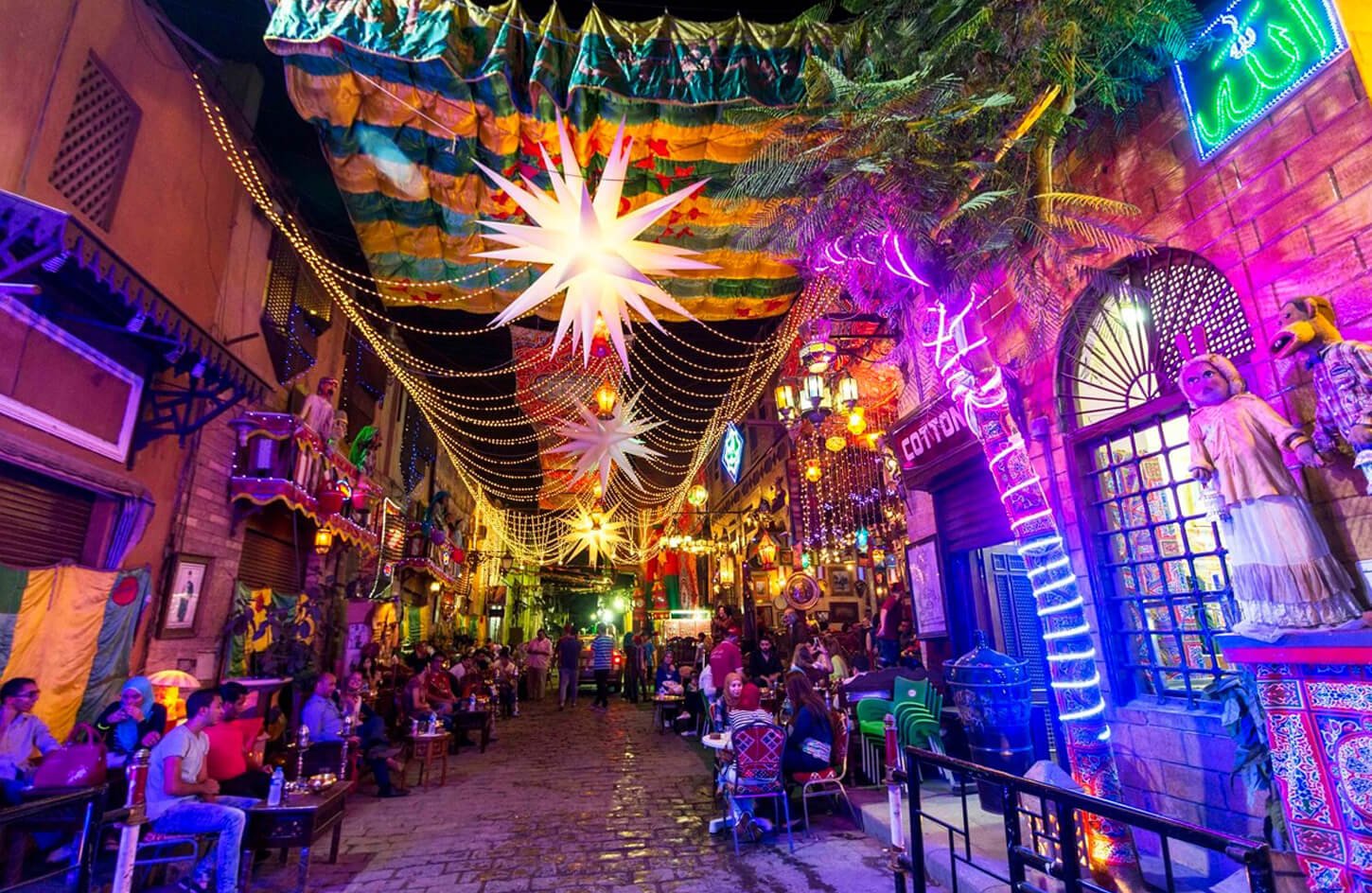
Looking for a Ramadan travel guide to Egypt? I’ll share the good and the not-so-good of Traveling to Egypt During Ramadan. It’s a month of deep cultural experience, but it’s different.
The nights are lively! Markets glow until dawn, offering everything from Fanoos lanterns to kunafa desserts. In Cairo’s Khan al-Khalili bazaar, the smell of shorba soup mixes with storytellers’ voices. Plus, the Pyramids of Giza are less crowded during the day, perfect for sunrise visits.
But, there are challenges. Restaurants close until Iftar, so bring snacks or book hotel meals. Museums and shops have shorter hours, often closing early afternoon. And, eating or drinking in public during the day is not allowed.
Still, the benefits are worth it. Join the free iftar tables for over 1 million meals each night. Or, listen to Quran recitations at Al-Azhar Mosque, where many attend Taraweeh prayers. Cultural tents offer live music and henna art, blending tradition with fun.
My advice? Follow the local rhythm. Rest and shop in quiet markets during the day. At night, enjoy the vibrant atmosphere and try dishes like Fattah. With some flexibility, Traveling to Egypt During Ramadan is a memorable journey into the heart of Egypt.
Planning your days in Egypt during Ramadan? It’s easier than you think. Egypt Ramadan travel advice starts with knowing this: shops, cafes, and offices have new hours. Markets like Khan el-Khalili close midday for prayers but reopen after sunset, glowing with lanterns and spices. Government offices often wrap up by 2 or 3 p.m.—handle permits early. Restaurants? Most shut daytime but burst to life post-iftar, offering feasts of molokhia and kunafa. Public transport? Buses and trains adjust, so confirm schedules daily.
My top Egypt travel tips during Ramadan: prioritize morning sightseeing—pyramids and museums are quieter then. By afternoon, grab shade and a mint tea while locals rest. Then, watch the magic: streets awaken after sunset, alive with food stalls and laughter. Malls stay open late, perfect for souvenir hunting under neon lights. Taxis? They’re plentiful post-iftar, so no rushing.
Flexibility is your compass. Ask hotel staff for real-time updates—they’ll guide you to open bakeries or 24-hour pharmacies. Evening markets like Ramses Square or Islamic Cairo’s alleys shine brightest after dark, offering a front-row seat to Egypt’s traditions. Remember, this isn’t just a schedule change—it’s a chance to savor the culture’s heartbeat.
Imagine the sound of clay plates clinking as families gather. This is the start of Iftar, a moment that fills Egypt’s streets with laughter and spices. The Cultural experience in Egypt during Ramadan is truly special.
Daytime dining is scarce, but the evening scene is vibrant. Hotels like the Nile-side Ritz-Carlton or Mena House offer lavish buffets. They serve over 100 dishes, from crispy ta’ameya to honey-drenched basbousa. But the real magic is in local eateries, where apricot-scented qamar al-din flows freely.
Joining an Egyptian family’s Iftar table is the ultimate Egypt Ramadan traditions experience. Many Cairo families invite visitors to share dates and lentil soup. These meals become storytelling sessions about centuries-old customs.
Street vendors selling kunafa near Khan el-Khalili bazaar add a sensory adventure. Golden pastry dripping with orange blossom syrup is a must-try. Don’t miss the suhoor breakfasts at 3am in Sayeda Zeinab, where fava bean dishes are served under the moonlit sky.
Etiquette is important: avoid eating in public squares during the day. But enjoy daytime snacks discreetly in places like Islamic Cairo. Night markets like Zamalek’s Ramadan tents buzz with activity, selling traditional qatayef pancakes filled with cheese.
Even the smallest Egypt Ramadan traditions matter. Try crumbling a piece of bread into a cup of thick Arabic coffee as Bedouin-style hospitality. Every bite here tells a story older than the pyramids, making every meal a taste of living history.
My first trip to Luxor during Ramadan taught me a lot. Respect is shown through small gestures. When visiting Egypt in Ramadan, it’s important to dress modestly. Cover your shoulders and knees, even in the summer heat.
Loose blouses, long skirts, or trousers are good choices. Locals will notice and appreciate your cultural sensitivity. This is true whether you’re exploring Khan El Khalili bazaar or strolling by the Nile.
During daylight hours, avoid eating, drinking, or smoking in public. I learned to sip water discreetly in hotel lobbies or designated areas. Public displays of affection are best saved for private moments.
A simple nod or smile can go a long way! Etiquette also means how you engage with locals. Whisper softly near mosques during prayer times, like at the historic Al-Hussein Mosque in Cairo.
Patience is key—service might slow as Egyptians prioritize prayer. I once waited 15 minutes for a café owner to return from Taraweeh prayers. But the warm “thank you” made the wait meaningful.
Respecting traditions opens doors. When entering homes or mosques, remove shoes—ask locals to borrow a scarf if you forget yours. Tipping 10–15% at restaurants shows gratitude, and a friendly “Ramadan Kareem” sparks genuine smiles.
These Egypt travel tips during Ramadan aren’t just rules—they’re invitations to deeper connections. By dressing thoughtfully and acting mindfully, you’ll experience the heart of Egyptian hospitality, not just its surfaces.

Picture Egypt during Ramadan, where traditions fill every corner. Cairo’s Khan el-Khalili Bazaar shines with lanterns. You can find hand-painted fanoos and enjoy warm qatayef.
Al-Hussein Mosque’s courtyard is alive with storytellers. Their voices tell tales under the stars. Al-Azhar Park is where families share dates and laughter as the sun sets.
In Alexandria, the Corniche comes alive at sunset. Listen for the cannon’s boom, a call to iftar. Borg Al Arab’s streets are lit with lanterns, inviting you to join in.
Luxor’s Karnak Temple glows at dusk. Then, join Nile-side gatherings with Nubian drums and grilled maḥshy. Aswan’s Souq Al-Malakha is full of life, selling Nubian textiles and basbousa.
These moments in Egypt during Ramadan are unforgettable. Whether it’s sipping mint tea in Sohag or exploring Cairo’s Darb el-Ahmar, you’ll feel the joy and faith. Each place offers a unique glimpse into Egypt’s traditions.
Did you know Egypt’s evenings during Ramadan buzz with life? As the sun sets, Ramadan travel guide to Egypt reveals a magical shift. Streets sparkle with lights, and the air fills with the scent of kunafa and baklava. The Egypt Ramadan traditions after iftar are a feast for the senses.
Start your evening with Taraweeh prayers at Al-Azhar Mosque. The call to prayer echoes through historic neighborhoods. By 9 PM, the real fun begins: Sufi tanoura dancers whirl in golden skirts.
Wander Khan el-Khalili bazaar, where vendors sell handcrafted lanterns—traditional symbols of Ramadan—until midnight. Don’t miss the sohour events at Nile-side cafes. Families gather for late-night meals at 2 or 3 AM.
These shared tables offer golden opportunities to chat with locals. They’ll share their favorite mamoul recipes or the best spots for moonlit felucca rides.
Pro tip: Arrive early to Cairo’s Sayeda Zeinab district around 4 AM. Witness families breaking their fast with honey-drenched kahk cookies. For a quieter vibe, head to Alexandria’s Montazah Palace gardens post-iftar—families picnic here under fairy lights.
Always ask locals for their favorite hidden gems. They’ll gladly show you where to find the liveliest Ramadan moments. Just remember: dress modestly even at night, and avoid eating in public spaces before sunset.
Planning Egypt Ramadan sightseeing? Let me share some tips to make your journey unforgettable. Start by timing your visits wisely. Sunrise is perfect—visit the Pyramids of Giza then. The crowds are fewer, and the weather is cooler.
I’ve seen the Sphinx at sunrise, and it’s a memory I’ll always treasure.
Remember, Nile cruises at dusk show Cairo’s skyline beautifully lit. It’s when Egypt’s heritage feels most alive. By following these tips, your Egypt Ramadan sightseeing will be unique.
When planning your Egypt travel tips during Ramadan, start with packing smart. Choose light fabrics like linen shirts and loose trousers. Remember to cover your shoulders and knees, mainly when visiting mosques.
Pack a lightweight scarf to respect local customs without losing comfort. The heat in Egypt is intense, even at night. So, layer with a cardigan for evening prayers or sohour gatherings.
Staying hydrated is crucial. Carry a reusable water bottle to refill during the day. Egyptian hospitality means you’ll often get drinks offered. Snack packs of dried fruit or nuts are useful when cafés are closed.
Don’t forget SPF 50+ sunscreen and a wide-brimmed hat. The sun in Egypt is strong, Ramadan or not!
Bring a small gift for iftar invitations, like artisanal chocolates or a handmade Fanoos lantern. Avoid alcohol or pork products. A pocket phrasebook with phrases like “Bismillah” shows respect. My favorite hack? A journal to write down stories from street vendors selling kunafa at midnight.
Comfortable walking shoes are essential. Ramadan markets buzz after sunset, with stalls selling qatayef until dawn. Pack foldable flip-flops for sandy desert hikes. For women, a pashmina adds style while visiting Khan El Khalili Bazaar after dark.
Remember, Traveling to Egypt During Ramadan offers unique moments. A small backpack with these essentials lets you fully embrace the culture. From sipping hibiscus tea with locals to joining midnight prayer crowds at Al-Azhar Mosque, every item should blend practicality with curiosity. The best souvenirs start with thoughtful packing!
Traveling to Egypt during Ramadan is the best time to visit Egypt during Ramadan. It’s a chance for an cultural experience in Egypt during Ramadan. The country lights up with Fanoos lanterns and Khan El Khalili markets buzz at night.
Imagine having qamar al-din at Iftar with locals or Suhoor under the stars. These moments are truly special and unlike any other travel experience.
Timing is everything. In 2025, Ramadan starts on February 28. Iftar times in Cairo are like 5:33 PM. Businesses adjust hours, but the pyramids are less crowded.
Over 75% of homes light up with Fanoos, and 31% host communal Iftars. Even the Citadel of Saladin signals meal times with cannon sounds. It’s a mix of old traditions and modern life.
Embrace the rhythm of Ramadan. Dawn calls from mesaharati drums wake you up. By midnight, Alexandria’s streets are alive with families sharing dates.
Over 50% of tourists seek this real experience. Ramadan’s 14-hour fasts bring people together. From Kahk cookie making to Eid celebrations in April, every detail is a story.
Plan with curiosity. Look up local schedules like Luxor’s Sehri at 5:06 AM or Suez’s Iftar at 5:28 PM. Respect the quiet days and enjoy the evening’s energy.
This is when Egypt shows its true soul. It’s a mix of devotion and joy. Your journey is more than sightseeing; it’s a bridge between worlds. Are you ready to experience Egypt’s heart at its most genuine?
Read more related articles:

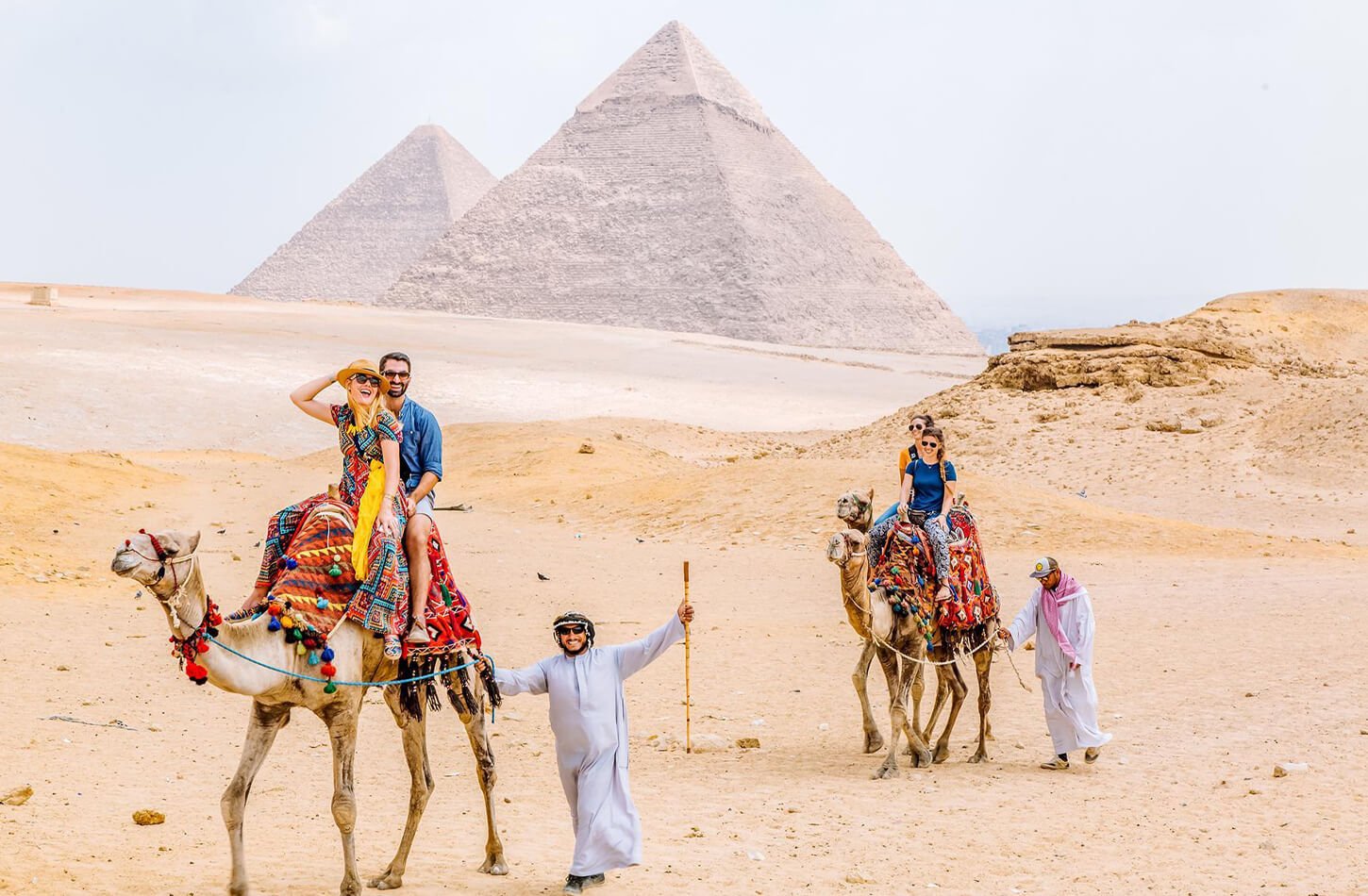
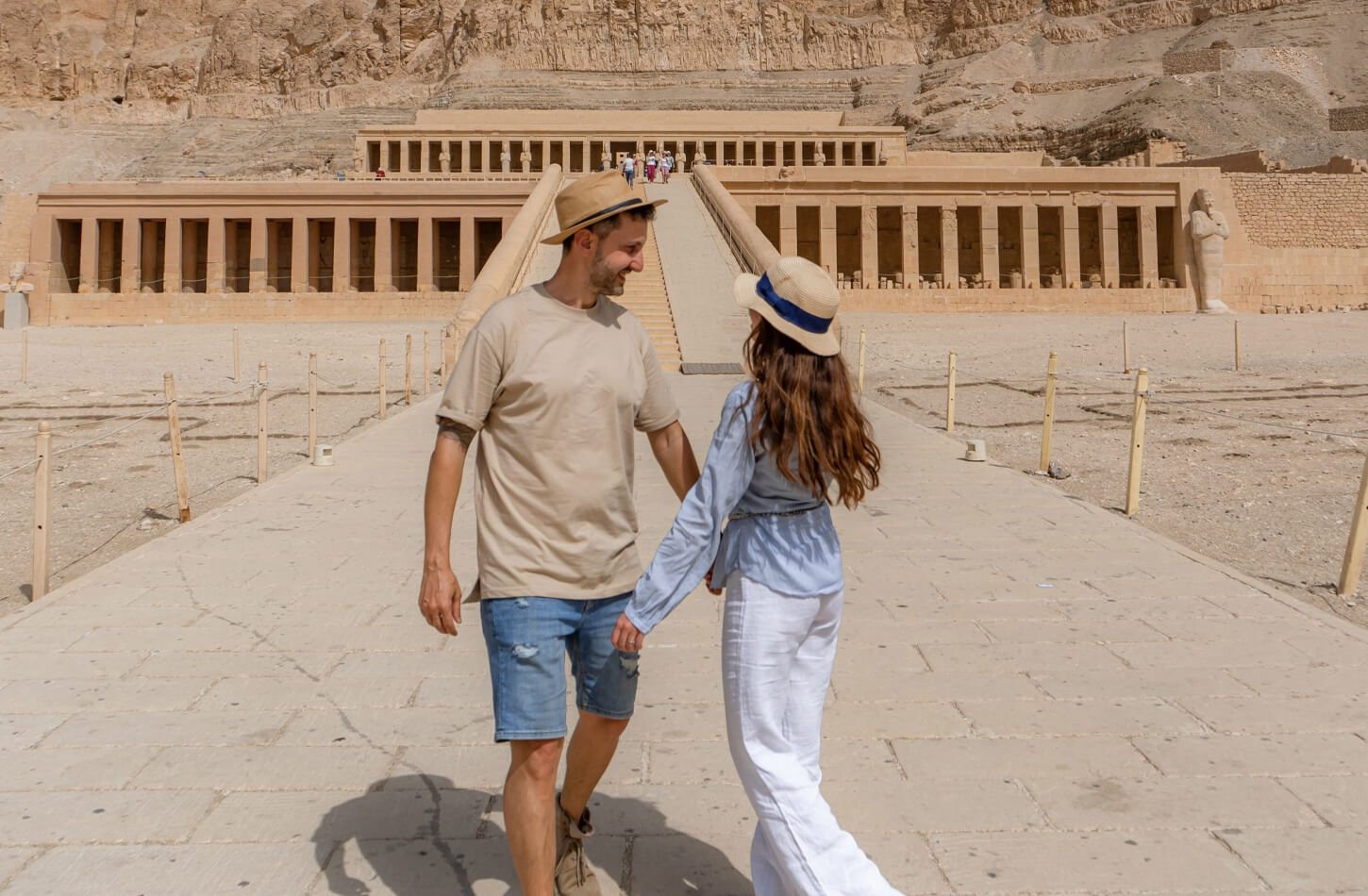
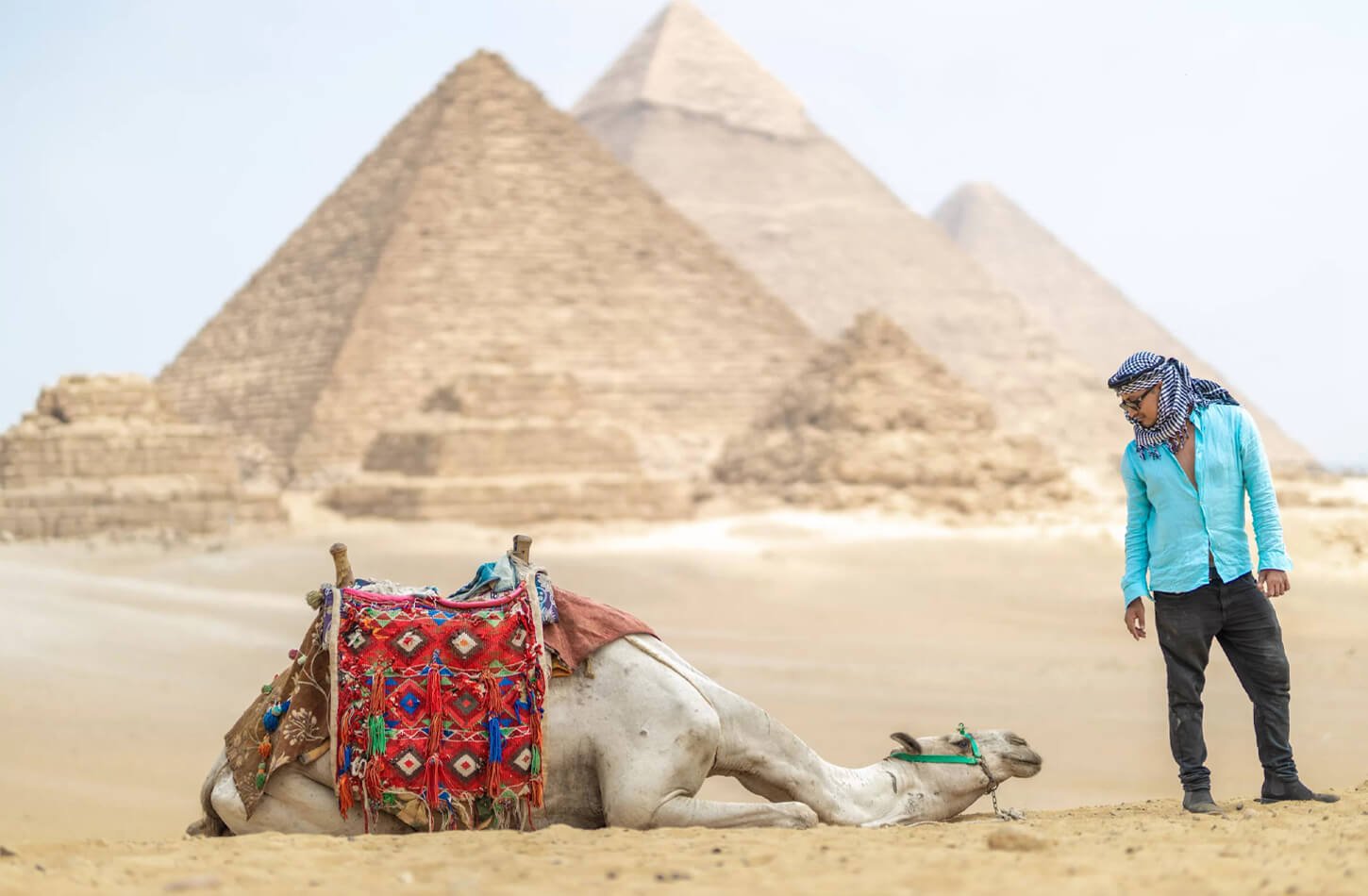
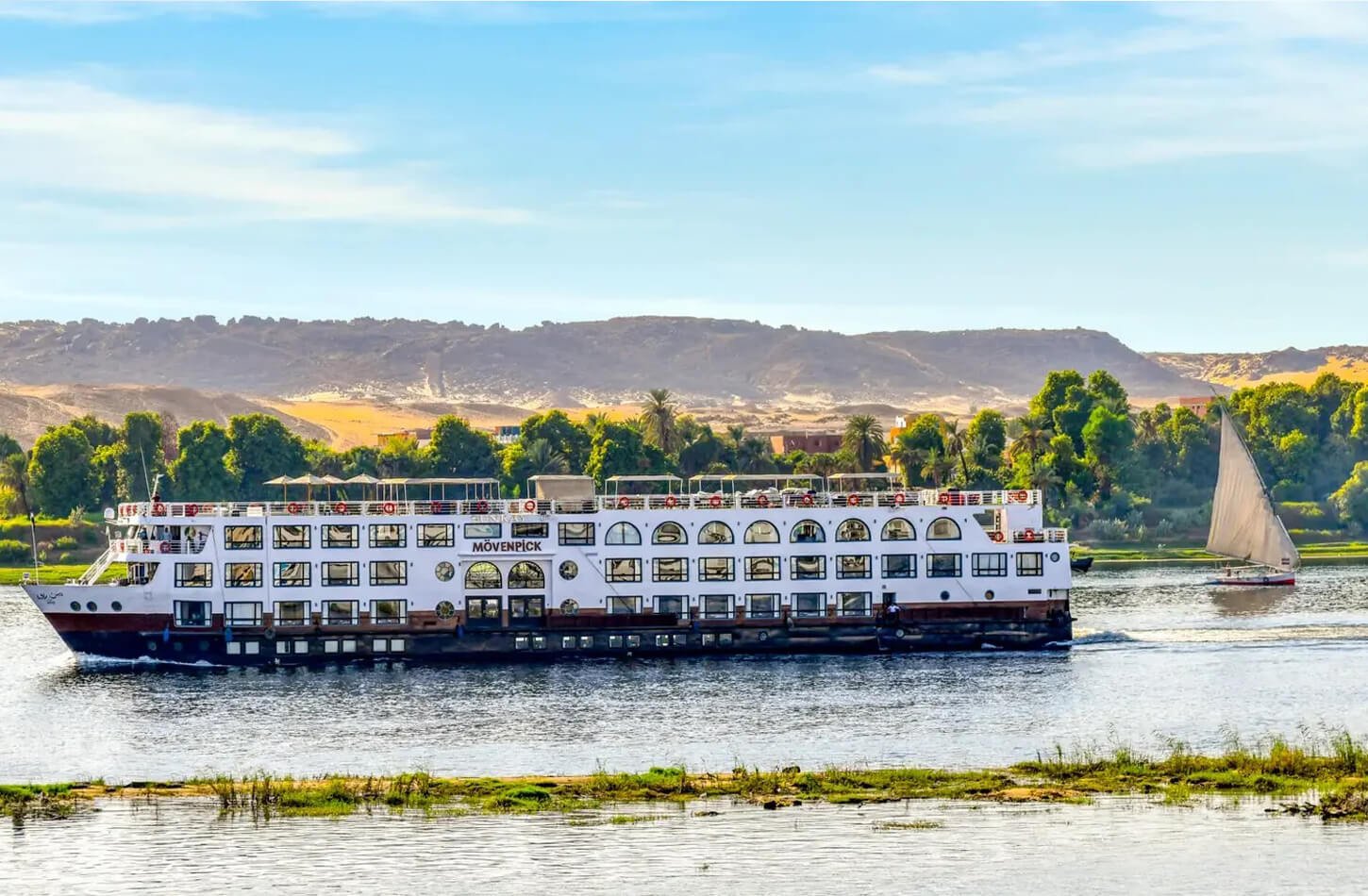
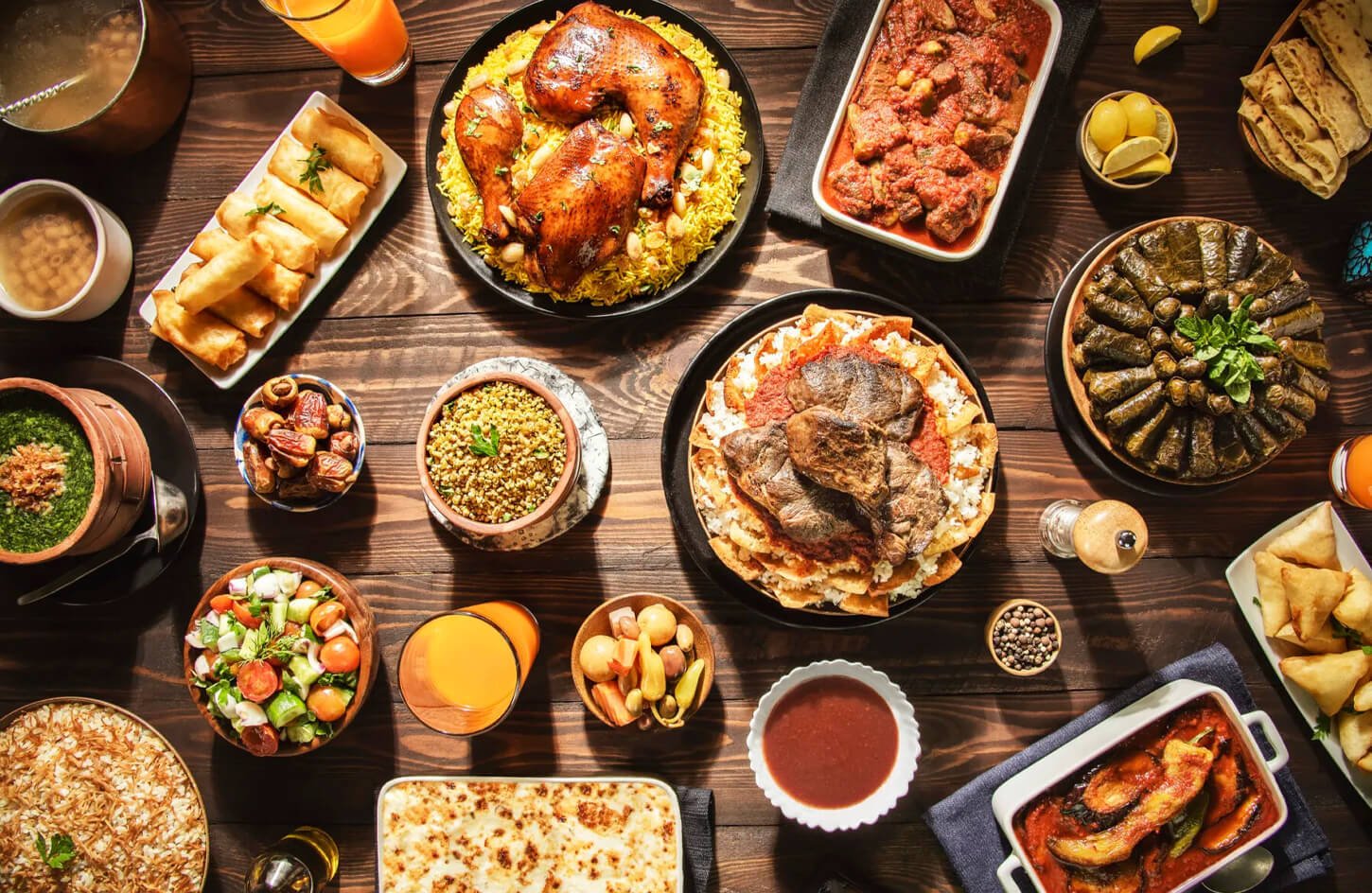

Don't just get there, get there in style.
Information
Follow Us
Payment channels
